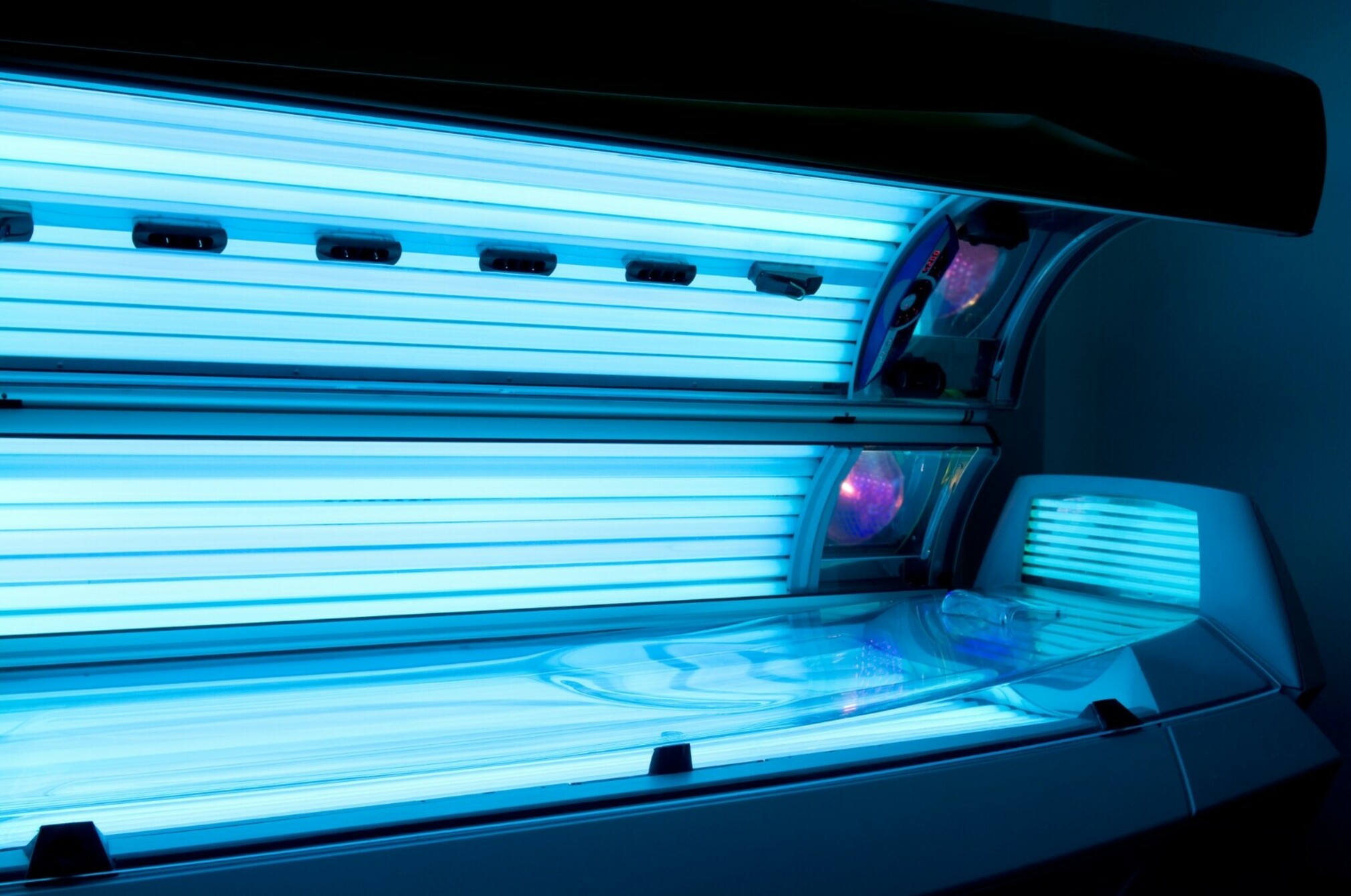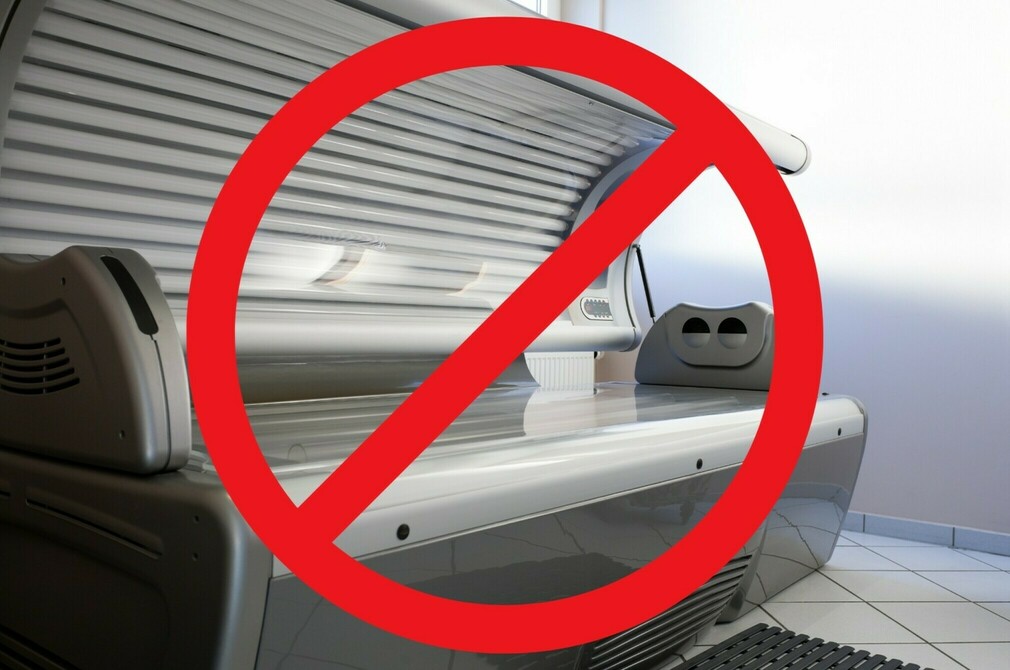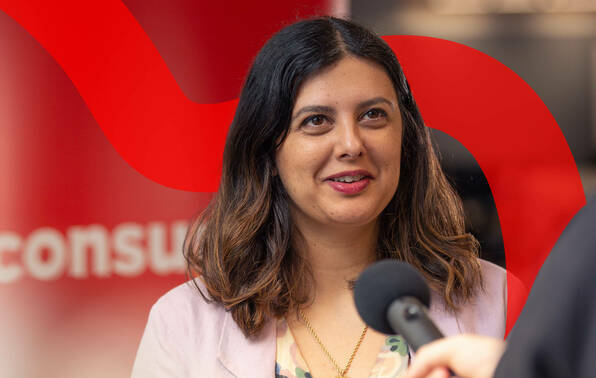Sunbed dangers: time for a ban

Using a sunbed to get a tan is risky for anyone. But for people with fair skin and those under 18 years old, the potential for lasting and serious damage increases. We found 5 sunbed businesses that let in customers who shouldn’t be using sunbeds.

Our latest sunbed mystery shopping survey found, yet again, that consumers don’t have sufficient protection from sunbed operators.
We sent mystery shoppers to sunbed operators around the motu. These included both underage and fair-skinned people who should not be using sunbeds.
Disappointingly, 5 operators (1 in Wellington, 3 in Christchurch and 1 in Dunedin) allowed a person with type-1 skin (fair skin, which burns easily or never tans) to have a sunbed session.
The good news is that none of our under-age mystery shoppers were allowed to take a sunbed – an improvement on our 2024 survey.
What we found
Fair-skin survey
In Auckland, our type-1 shopper was refused a sunbed at all 6 places. This was an improvement on last year, when our type-1 shopper was allowed a sunbed at 4 sunbed businesses.
In Wellington, our shopper was refused a sunbed at 5 out of 6 places.
- At Studio 128 in Johnsonville, our shopper was classified as type-1 on a skin assessment form. Despite this, she was allowed to have a sunbed for a short period (less than 2 minutes). This operator is a repeat offender – in our 2022 and 2024 surveys, Studio 128 staff allowed a type-1 person to use a sunbed.
In Christchurch, our shopper was allowed a sunbed at 3 out of 6 places.
At Gloucester Cottage Day & Medi Spa, our shopper’s skin assessment gave a score of 6 (type-1), yet she was allowed a sunbed.
At Here for Hair, our shopper got the same score of 6 (type-1). She was told she was “on the lower spectrum” and to “try 6 minutes”, and she would be able to build up the time from there. The timer was not connected to the sunbed, so our shopper had to manually set a timer – the staff member said the sunbed would not have turned off until 12 minutes.
At Nirvana Beauty Lounge, our shopper completed an online skin assessment that gave her a score of 4 (type-1). However, the staff member did not check the form, and our shopper was allowed a sunbed.
For the first time, we sent a type-1 shopper to Dunedin (1 operator) and Queenstown (1 operator). Our shopper was allowed a sunbed at the Dunedin sunbed provider.
- At Olympic Gym, our shopper was classified as type-1 on the skin assessment form, and she was allowed a sunbed for “sub 3 minutes”. The staff member told her “Once your body gets used to 3 minutes, you can move up to 6 minutes.”
When we contacted the operators about our survey, Olympic Gym was the only company to respond. Its owner told us he was disappointed the shopper was allowed a sunbed and additional training would be given to staff to ensure this didn’t happen again.
Under-age survey
All the operators refused to let our under-age shoppers book a session. This included the operator that allowed our under-age shopper to have a sunbed session at its 2 premises last year.
While arranging the appointment over the phone, 4 operators asked our shoppers their age. The other 17 turned down the shoppers when they arrived for their appointment.
Is sunbed tanning safe?
The World Health Organization’s International Agency for Research on Cancer classifies sunbeds as carcinogenic.
Sunbed use is associated with an increased risk of early-onset melanoma. The risk increases for people who use them more often or who used them at an early age. Using a sunbed is also associated with skin burns, premature ageing, cornea burns and cataracts.
The New Zealand Dermatological Society Inc (NZDSI) says the only time using a sunbed is useful is during medical phototherapy. This is where the body is exposed to wavelength controlled ultraviolet (UV) radiation to treat some skin conditions. The NZDSI says these treatments should be conducted under medical supervision.
Sunbed regulation
Since 2017, it has been illegal under the Health Act 1956 for operators to allow under-18-year-olds to use a sunbed.
Councils in Auckland and the Wairarapa regions have also implemented a bylaw requiring sunbed operators to be licensed and to comply with minimum standards. This includes providing customers with a consent form and conducting a skin assessment.
For the rest of the country, it’s not compulsory to comply with the sunbed standard (AS/NZS 2635:2008 Solaria for cosmetic purposes). However, Health New Zealand | Te Whatu Ora advises sunbed operators to comply with this standard.
The standard includes criteria about consent forms, eye protection, warning notices and skin assessments. It states sunbeds should never be used by people with type-1 skin.
It also recommends sunbeds not be used by:
people who have been sunburnt several times in childhood
people with numerous moles
people who have been treated for skin cancer
people who are taking certain medications.
Sunbeds should be banned
We’ve been mystery shopping sunbed operators for years. Every time, we’ve found the lack of regulation and failure to adhere to the voluntary standard leaving consumers vulnerable.
The Skin Cancer Prevention and Early Detection Strategy 2024–2028 was launched in March 2025. The strategy was developed by the Melanoma Network of New Zealand (MelNet) in collaboration with skin cancer experts and stakeholders (including Consumer NZ). It suggests 12 key recommendations to strengthen skin cancer prevention and early detection efforts.
One recommendation is to ban the importation, manufacture, sale and rental of sunbeds for commercial or private use.

Dermatologist and past-president of the NZDSI Dr Louise Reiche says New Zealand has some of the highest rates of skin cancer in the world, and commercial sunbed exposure adds to the risk.
“The only solution is a complete ban on non-medical sunbed use.”
The ban is supported by several agencies, including Consumer NZ, National Melanoma Working Group, MelNet, NZDSI, Cancer Society of New Zealand, Melanoma New Zealand, Public Health Association of New Zealand, The Australasian College of Dermatologists and the University of Otago’s Social and Behavioural Research Unit.
Consumers also support a ban. In a 2023 Consumer NZ survey, 47% of respondents supported a ban, while 36% were unsure and only 17 % did not want a ban.
Sunbeds are already banned in Australia, Brazil and Iran. The Australian ban has been effective, with approximately 4% of melanoma and non-melanoma skin cancers expected to be averted and more than A$64 million saved in healthcare costs.
What are sunbeds?
Sunbeds (or solarium) are artificial devices used to tan the skin. They are either a lie-down bed or a cubicle you stand in.Sunbeds contain light tubes that, like the sun, emit UV radiation as well as visible light. The intensity of the UV radiation and proportion of UVA and UVB radiation emitted by the light tubes depends on how the bulbs are manufactured. This means UV radiation levels may differ between sunbeds and may also differ from the sun’s UV radiation.
Skin may be damaged faster on a sunbed than through exposure to the sun.
How we survey sunbed operators
Consumer NZ sent under-age and type-1, fair-skinned mystery shoppers to sunbed operators around the motu. We wanted to find out how well operators were meeting legal requirements and standards that restrict sunbed use for at-risk consumers.
None of our mystery shoppers actually used the sunbeds. Instead, they used the time to complete our survey form in the privacy of the sunbed cubicles.
Under-age survey
The Health Act 1956 restricts sunbed use to people aged 18 years and over. The more you use a sunbed and the younger you start, the higher your risk of getting skin cancer.
Our under-age mystery shoppers surveyed 21 sunbed operators in Auckland, Hamilton, Tauranga, Palmerston North, Whanganui, Wellington and Christchurch.
First, shoppers phoned the business to make an appointment. In some instances, shoppers were refused an appointment over the phone after their age was checked.
Fair-skin survey
The voluntary sunbed standard (AS/NZS 2635:2008 Solaria for cosmetic purposes) recommends that people with type-1 skin (fair skin that burns readily or never tans) shouldn’t use a sunbed. It also advises sunbed operators to use a skin-assessment questionnaire to determine a person’s Fitzpatrick skin type (a classification of human skin complexion based on colour and reaction to exposure to sunlight).
The questionnaire asks about genetic factors (eye, hair and skin colour and number of freckles), reaction to sun exposure, and tanning habits. Points are allocated for each question, and the total score gives your skin type. There are six skin types: a score of 0 to 7 is skin type 1, while a score of 8 to 16 is skin type 2.
We sent shoppers with type-1 skin, as assessed by a health professional, to 20 sunbed operators in Auckland, Wellington, Christchurch, Dunedin and Queenstown to see if the operator allowed them to have a sunbed.

We can't do this without you.
Consumer NZ is independent and not-for-profit. To help us get a fairer deal for all New Zealand consumers, you can make a donation. We’ll use your contribution to investigate consumer issues and work for positive change.
 This report is free thanks to funding from
This report is free thanks to funding from
Member comments
Get access to comment